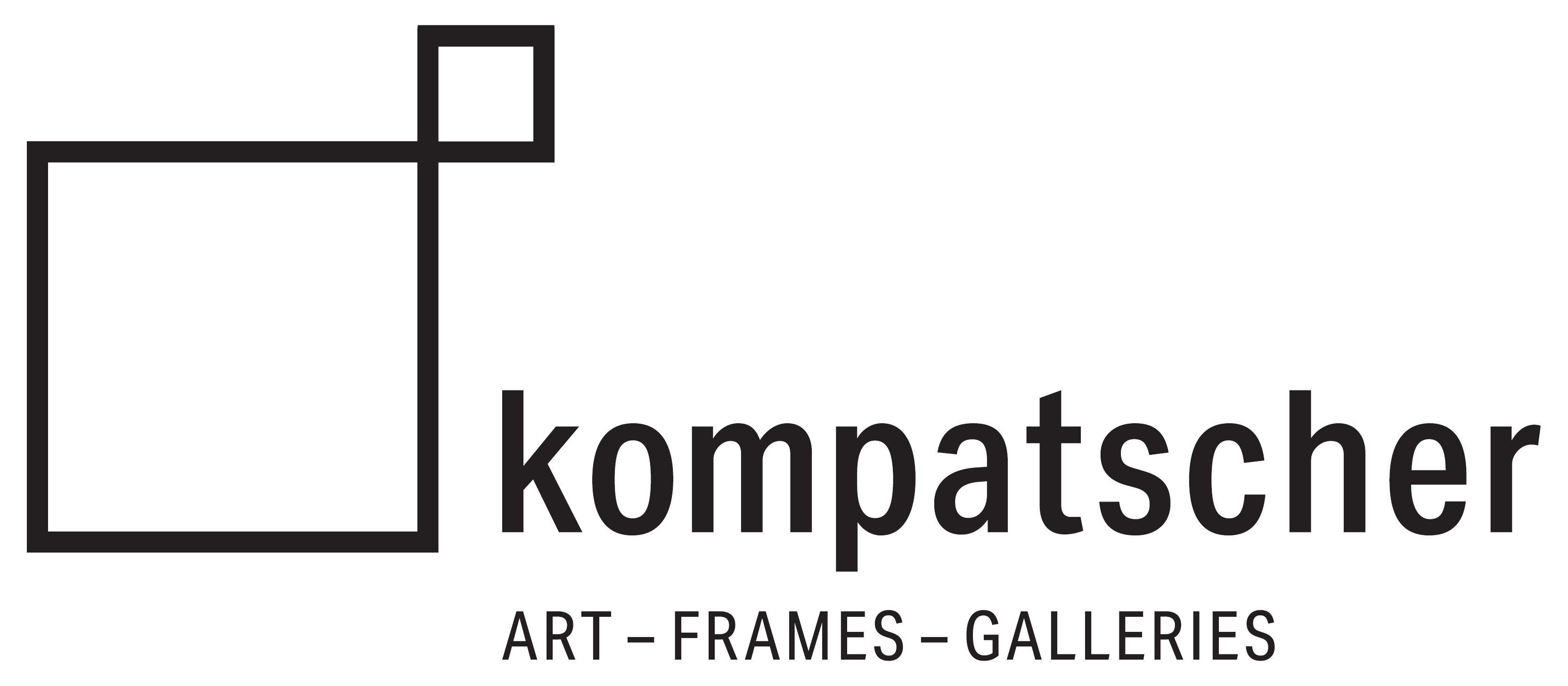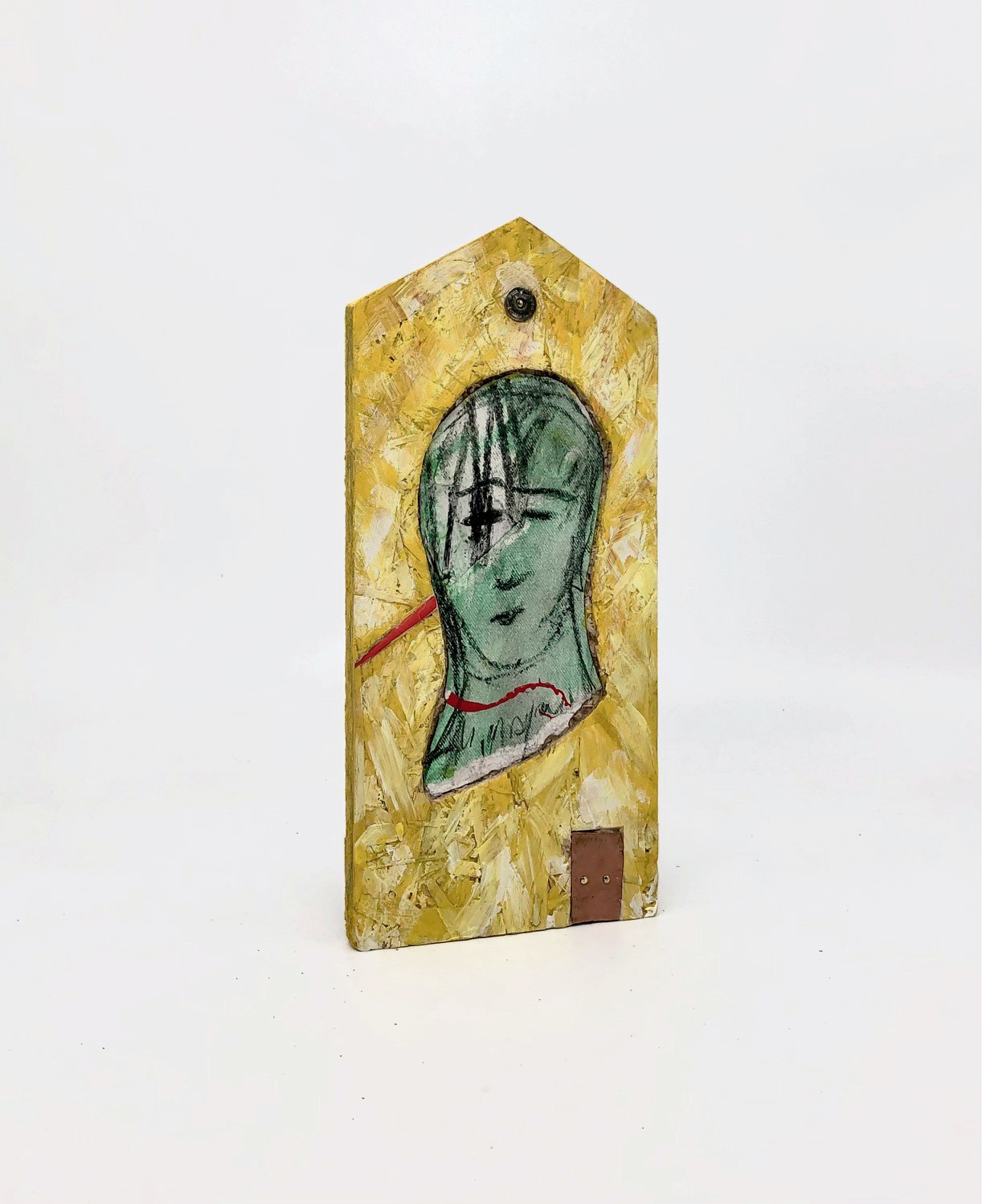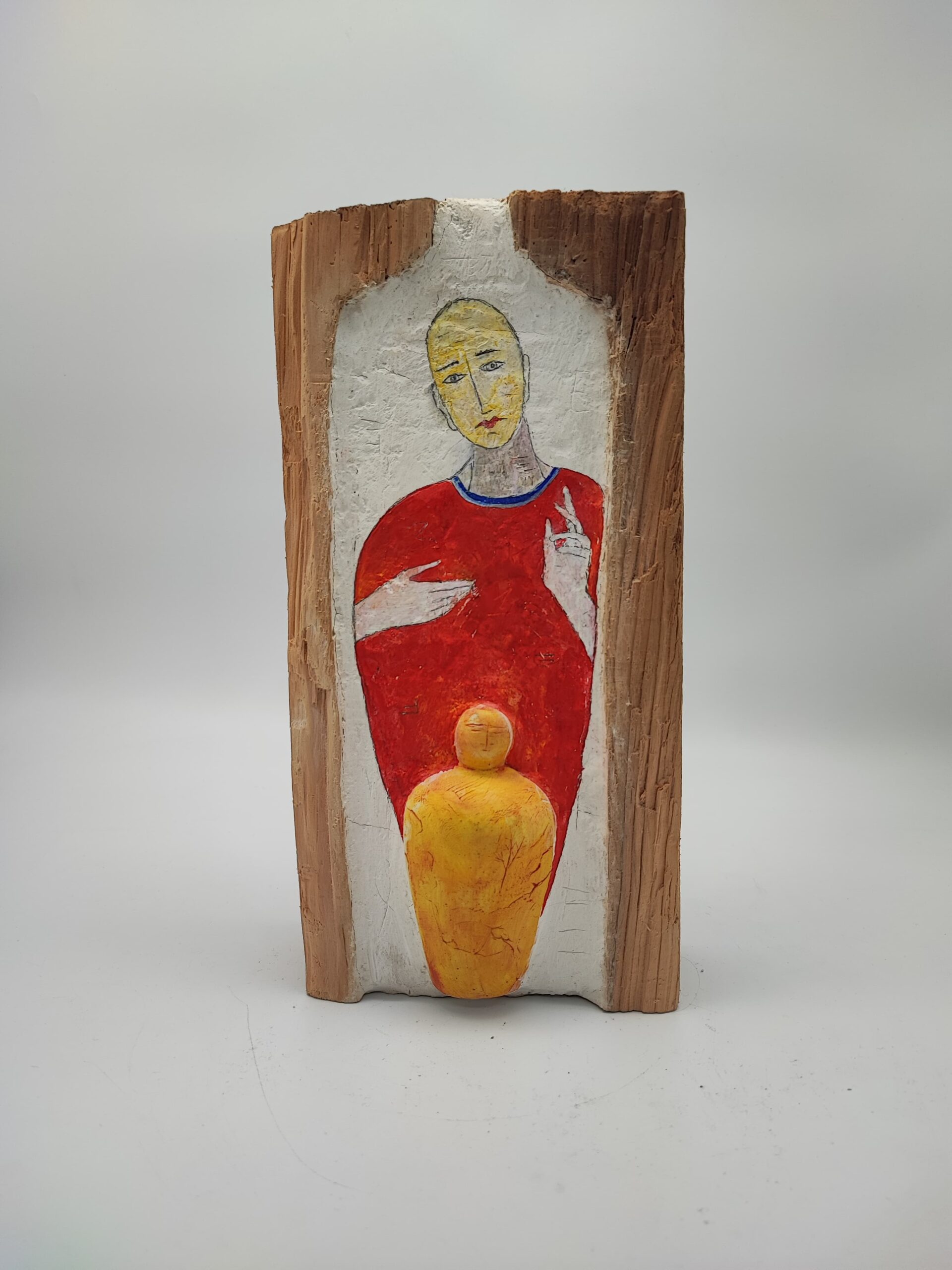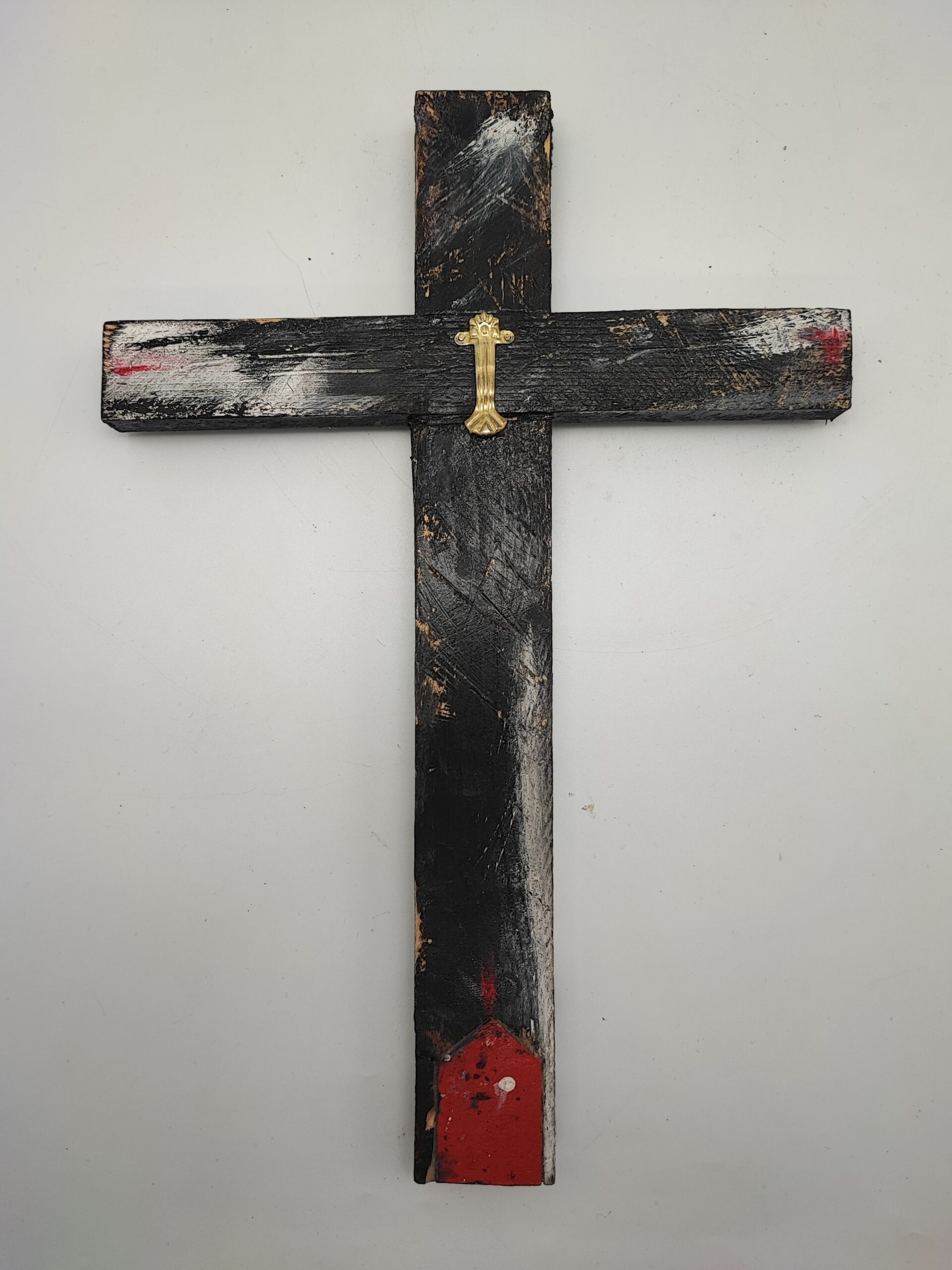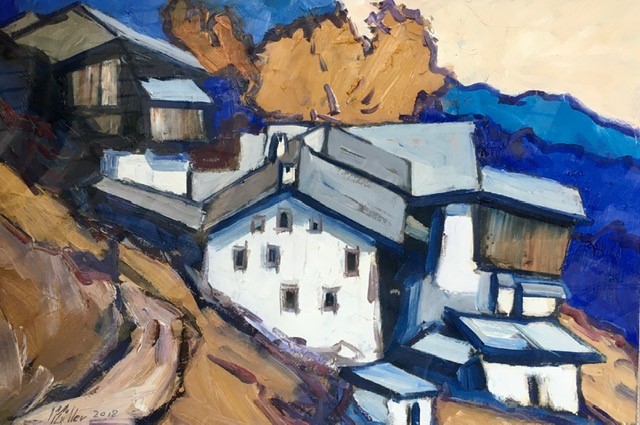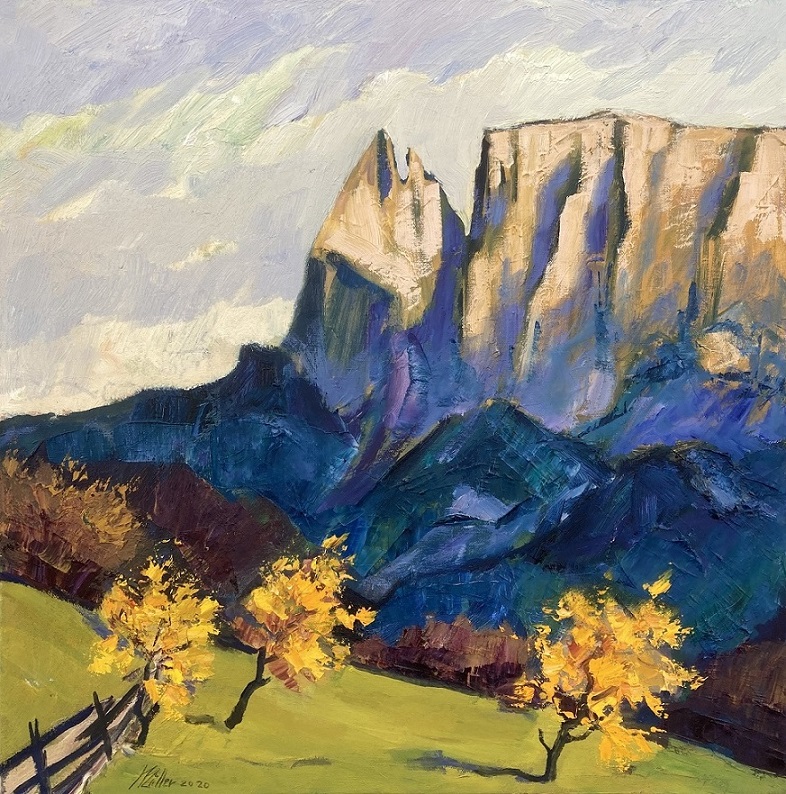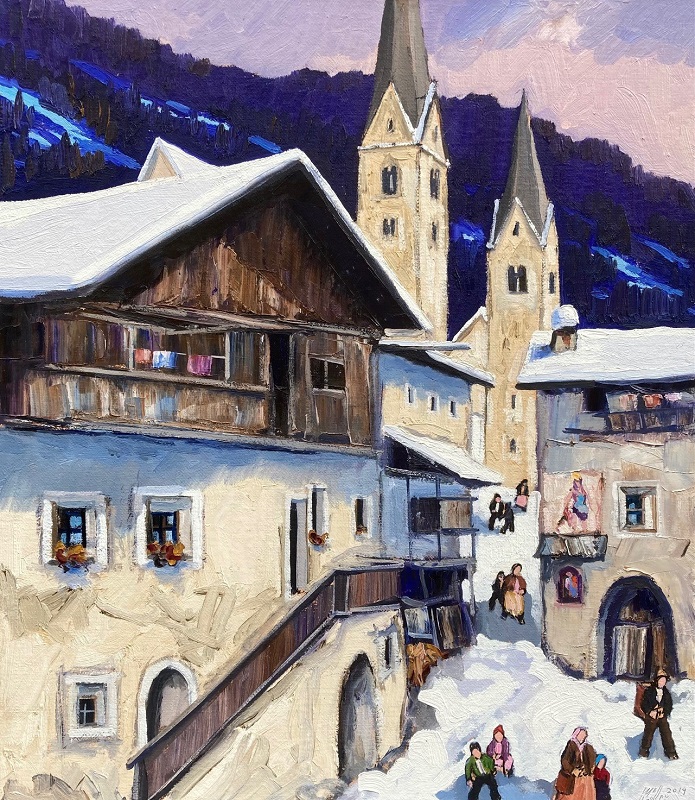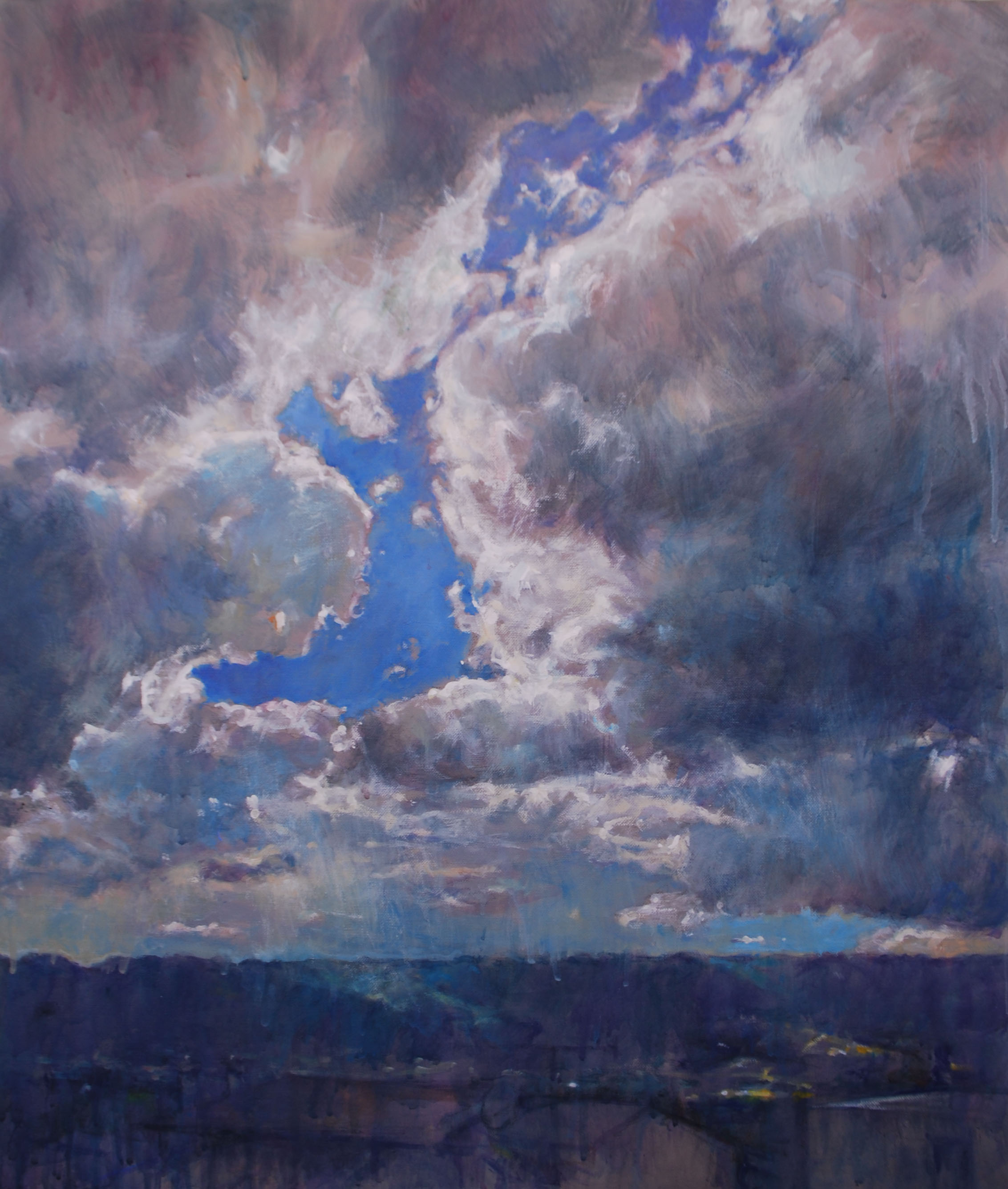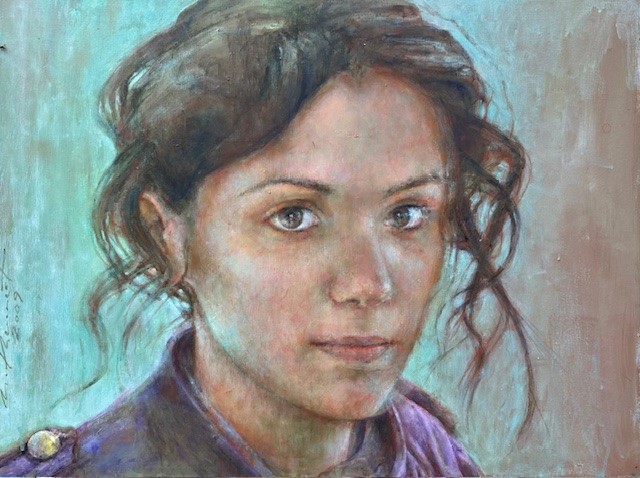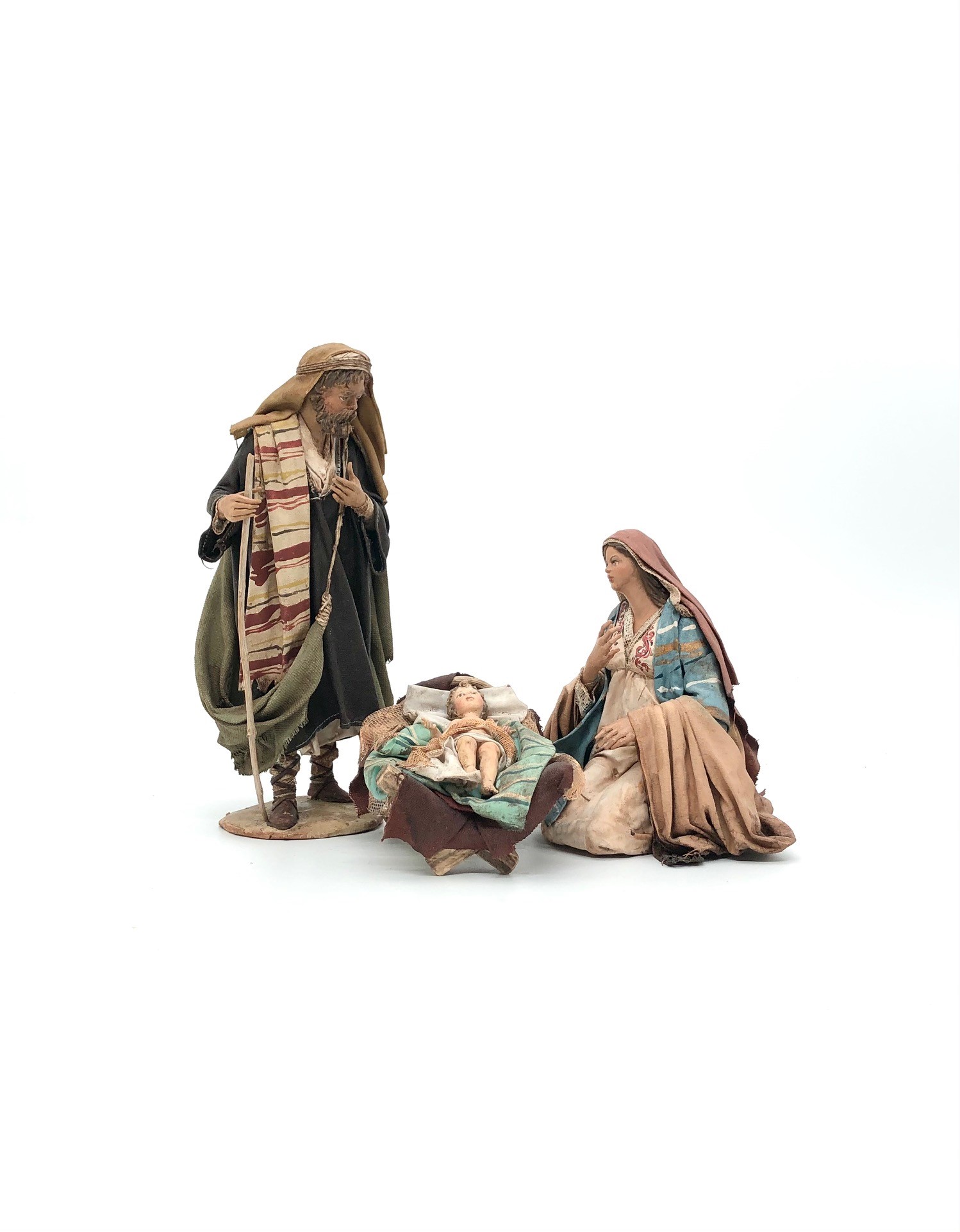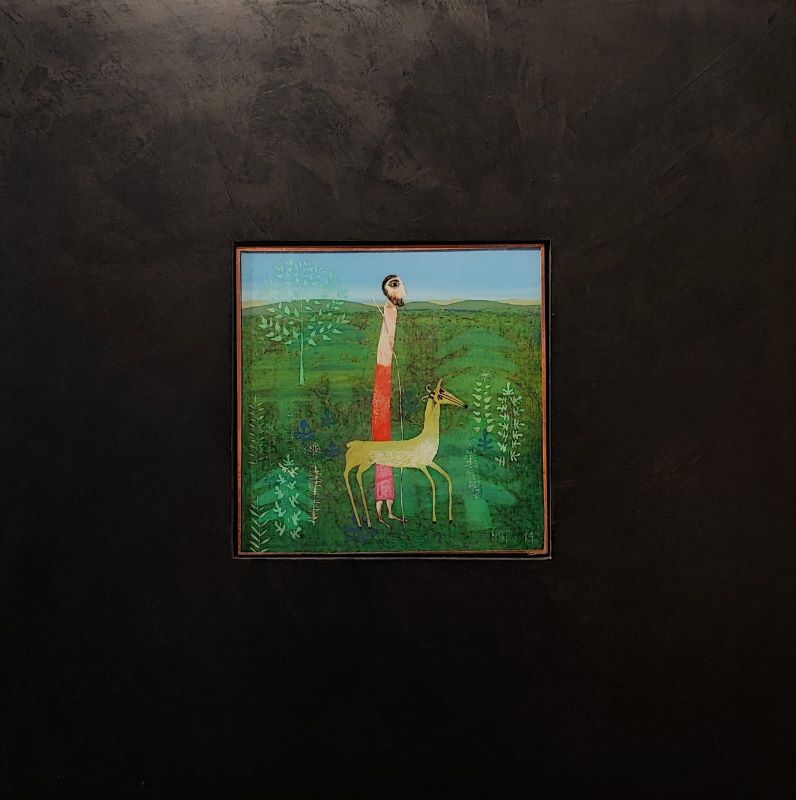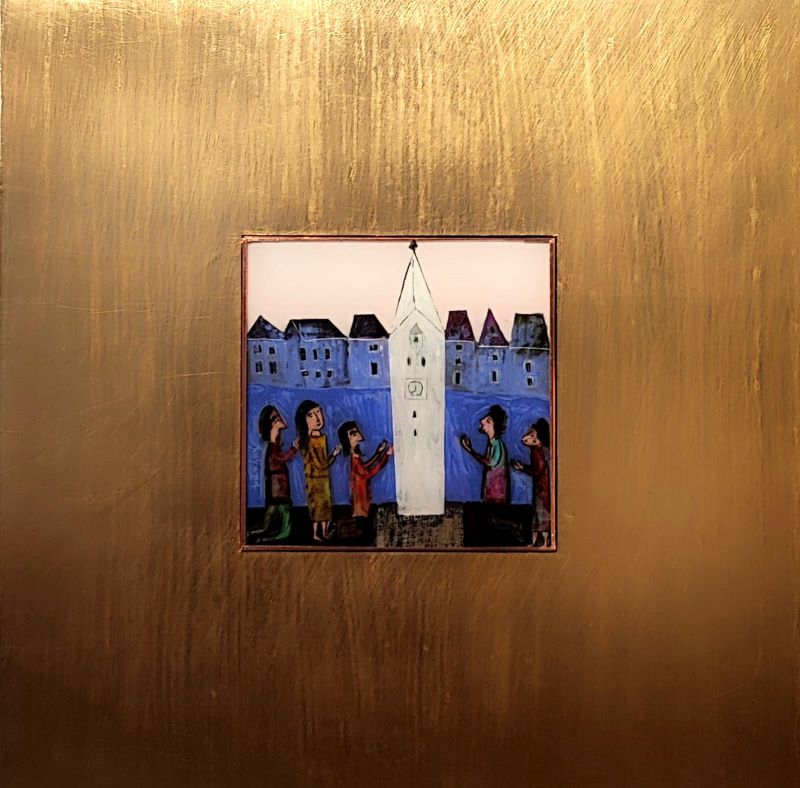Goller Guido
Goller Guido
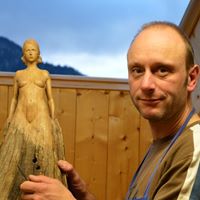
Born 1968 in Bolzano (I)
1982-83 visit of the art school in Ortisei / Val Gardena (I)
1983-88 Sculptor apprenticeship – journeyman’s examination
by Giuseppe Stuflesser – Arte Sacra
1991 Master title for woodcarving trade
Guido Goller lives and works in Ortisei / Val Gardena. The artist designs and completes sculptures in wood and bronze in a profane and sacral style.
Artworks:
Nothing found.
Pitscheider Jonas
Jonas Pitscheider
* 08.08.1966 / + 19.11.2017
He attended the Professional School of Arts in Ortisei, serving at the time a four-year apprenticeship. He started working on his own and gained a specialised training thorough education journeys, personal contacts with several artists and classes of painting and sculpture.
Since 1990 he has exported his works to several European countries such as Germany, Austria and Switzerland, as well as to the United States of America, Canada and Japan.
For realization of his works, he chooses wood, but he also uses other working materials such as bronze, stone etc.
1988 international sculpture contest in Cortina d‘Ampezzo (ITA)
1989-1996 personal christmas exhibition in Cologne (GER)
1996-2006 different fairs with personal stand in:
Dortmund and Munich (GER)
Salzburg and Innsbruck (AUT)
Vicenza, Milano and Bolzano (ITA)
Artworks:
Nothing found.
Kuss Birgit
Kuss Birgit
Born in Klausen (South Tyrol/Italy), she attended the art school in Val Gardena and continued her education at the “Accademia delle belle arti” in Florence.
Birgit Kuss had her first exhibition in Ischgl in 1994 – followed by many noteworthy exhibitions in Seefeld and Kaltern (1995), in the Congress Innsbruck and Schloss Ambras (1996), in Vipiteno, Lana and Brixen (1997), in St. Tropez (2001) , The works from the creative period in Munich were brought closer to the public through exhibitions in the “Forum” gallery, in the Sparkassen-Galerie in Schwaz and in several other exhibitions in Tyrol and South Tyrol.
Exhibition in Milan in the restaurant Roberto Cavalli (2006)
Exhibition at Sparkassen-Galerie Bruneck (2009)
Exhibition in Jenbach (May 2010)
At the moment the artist works and lives in Bressanone (South Tyrol) and also in Hall in Tyrol (A)
The artistic argument
In everyday life, ideas and innovations meet again and again and take turns. So also with Birgit Kuss. She looks back on a wide variety of creative periods and draws from the archaic primal force of old high cultures, which she translates into her works. It is essential that the artist does not follow a time-bound trend. All striving for perfection is subject to temporal conditions and has the effect that the painting of Birgit Kuss – despite a distinctive and typical style – is and will be subject to change.
As a tireless observer, a rarely satisfied nerd and inwardly seeker Birgit Kuss has entered a new creative period. The only constant of the artist is the color gold! Gold is a symbol of wealth in material and spiritually spiritual life. In the figurative sense, gold stands for inner wealth of the soul.
The Psychoenergetic Effect of Gold
Gold looks sublime, noble and precious on us. We perceive the shine and the radiation of gold as warming, since we associate it with the light and rays of the sun. In the translated sense, we combine light shine and radiation of gold with enlightenment of the mind and awakening from the darkness of ignorance. On the psyche, gold is supernatural, metaphysical and transcendent. Gold acts on us as perfection; it transforms the earthly to the divine. It embodies the supernatural perfection and is a symbol of immortality and eternity.
In a color composition, gold can not be integrated; it always seems isolated and as if in a unique position, it comes to the fore and dominates the other colors. The self-glare sets it apart from the other colors, gives it something radiant and special and makes all the other colors appear as secondary. This grandeur over the other colors gives her a uniqueness that we associate with qualities as distant, above and beyond things. Subtle Gold has a balancing and healing effect.
Artworks:
Nothing found.
Magnani Maurizio
Magnani Maurizio
Born 1956 in Bozen, Maurizio Magnani first gets a degree in physiotherapy. And only in 1992, he decides to undertake a path of self-teaching and to entirely devote himself to the art.
Numerous art works in wood and ceramics by Maurizio Magnani, as well as his paintings, are featured by the use of numerous allegorical figures and themes, representing first of all the values of life.
Artworks:
Müller Ernst
Müller Ernst
Born in 1951 in Schlanders, Ernst Müller passes the years of his childhood in various mountain farms in South Tyrol. Together with his 10 brothers, he is often sent to work in the neigboring alms. These long stays away from home awaken a deep sense of nostalgia inside of him. This homesickness will consequently become the main theme of his works. In the following years, he intensely looks for a personal style to be able to express on canvas and paper his interior experiences. During his career, Müller creates works that extend from imposing scenic designs to interesting murals; besides, he collaborates with various schools in terms of art projects realized in the outdoor spaces or regarding the interior design. In 1990, Ernst Müller’s name gets included in the list of the book “Contemporary Italian Art”, and in 2004 – in the “International Catalog of the Contemporary Art”. His style can be defined as abstract art ranging to the visual arts. His paintings perfectly reflect his values, generated from his deep love for simplicity.
Artworks:
Nothing found.
Theunert Holger
Theunert Holger
Born 1963 in Borna/Leipzig (East Germany), where he grew up his early years.
His artistic career began with first solo exhibitions right after high school.
In the early 80s Theunert was a member of the Fördergruppe Malerei/Grafik in Leipzig – he finished his studies of art (Malerei/Grafik) @ Hochschule für Grafik & Buchkunst Leipzig in 1989.
After testing different styles in a new artistic climate (after moving to Karlsruhe – West Germany) he returned to his roots – telling private stories with an easy access to the public.
Theunert‘s work is always influenced by music. In the 90‘s he began his collaboration with various musicians – J.Peter Schwalm (Brian Eno), Leo Abrahams (Roxy Music/Pulp), Martin France(Spin Marvel) etc. The projects included CD artworks and live performances.
Selected exhibitions:
Imagoars Venice – 2023
Abbey Novacella Vahrn/Brixen – 2018
Imagoars Venice – 2018
Artoomsfair Rome – 2018
OXO Tower London – 2017
MalamegiLab 7 Venice – 2017
Galerie Hofburg Brixen – 2017
Donosteartian Fair San Sebastian – 2016
AAF Milan – 2016
Galeria Gaudi Madrid – 2016
Timelessness – Gabrielfinearts London – 2015
Finalist Celeste Price London – 2017
Winner MalamegiLab – 2007
Art Comepition Venice – 2017
1st Price Award Artistrunway Indianapolis/USA – 2007
Artworks:
Nothing found.
Colombo Adriano
Colombo Adriano
The artist Adriano Colombo was born in Mossano (Vicenza), in 1940. In the cultural climate of the 60’s, he began to draw and after of a long research he arrived at the sculpture.
He has a very unique way to deal with the clay. The caricature is the new component for him, and the difficulty lies not only in the search of a new humorous viewpoint, but also in showing the extent of the mimic like expression and in constant relation between drawing and sculpture. The Adriano’s humorism knows no compulsion issues, it is so easy and natural like a little smile.
Artworks:
Nothing found.
Tripi Angela
Angela Tripi
By modelling terracotta according to the ancient Sicilian tradition, the artist Angela Tripi creates wonderful nativity figurines. However, if you have a more precise look at her figurines, you will notice their Arabic influence. Probably it is exactly that, what gives her nativity cribs – which are true works of art – that certain something that introduce us to Jesus’ life in a very special way.
Angela Tripi’s nativity figurines are characterized by a particular attention for details, her characters are so beautiful that they look alive. Each year they fascinate both art experts and simple enthusiasts of beautiful things. For several decades now, Angela Tripi has been working at her workshop in Palermo, but is known nationwide and in particular here in South Tyrol. Thanks to the co-operation of collectors and nativity crib lovers she keeps on turning her sceneries into something special.
The artist Angela Tripi modeled the uniques nativities with Terrrakotta in the Sicilian tradition.
The characters of their representations are of the Arabic style
The Angela Tripi artworks have the liveliness and love for detail, fascinating to the art expert as to the spontaneous lover of beautiful things. Angela Tripi has been working for decades in her workshop in the center of Palermo and continues to develop and creating new nativity scenes for collectors.
Artworks:
Nothing found.
Sciascia Salvatore
Salvatore Sciascia
Salvatore Sciascia was born in 1956 in Puglia. He currently lives in Bolzano where he works as an artisan, illustrator and artist. He mainly devotes himself to painting on glass, while testing various techniques of painting and processing. Sciascia also works in the sector of graphic arts, in xylography, to be precise. Besides, he has had several books for children published. In 1995, Salvatore Sciascia participated in an important national meeting of illustrators in Sarmede, as well as in a traveling exhibit throughout Europe. He also took part in various craft exhibitions in Rome, New York and Johannesburg, organized by the Ministry of Industry and Commerce.
His works often represent a distorted reality like that one of dreams or of fairy tales. The elements withdraw from their original form to create a fantasy world. The extraordinary ability of Sciascia to create new universes, entirely alien to the everyday life, makes him an ideal artist for illustrating books for children. Salvatore Sciascia first uses tempera. He personally makes frames for his paintings, that are often black or coated with gold or copper plates. The painting and the frame, therefore, seem to be very compact and uniform.
Thanks to his participation in creation of the children’s book “Il piccolo gufo”, Salvatore Sciascia has contributed into organization of various educational projects for children.
www.kleine-eule.net/index.html
Artworks:
Nothing found.
Grunt Armin
Grunt Armin
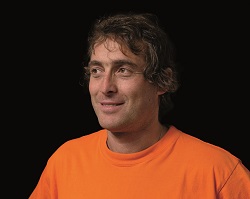
“Less is more”
My aim to let my work express itself
spontaneously by using just a few symbols.
Biography
1969 *
1984-91 Visit to the art and vocational school in
Val Gardena (I)
1992 working as a freelance artist
Exhibitions:
Ortisei (I), Bolzano (I), Milano (I), Lecce (I),
Daetz-Centrum Lichtenstein (D), Unika Galerie Ortisei (I)
Simposia and competitions:
Wooden sculptures Liffol le Grand (F)
Saint Pierre de Chartreuse (F)
Stone sculptures Caorle (I)
Snow sculptures Quebec (Can)
Snow sculptures Ischgl (A)
Snow sculptures Selva Val Gardena (I)
Ice sculptures Fairbanks Alaska (USA)
Ice sculptures Ottawa (CAN)
Ice sculptures Mosca (RUS)
Artworks:
Nothing found.
